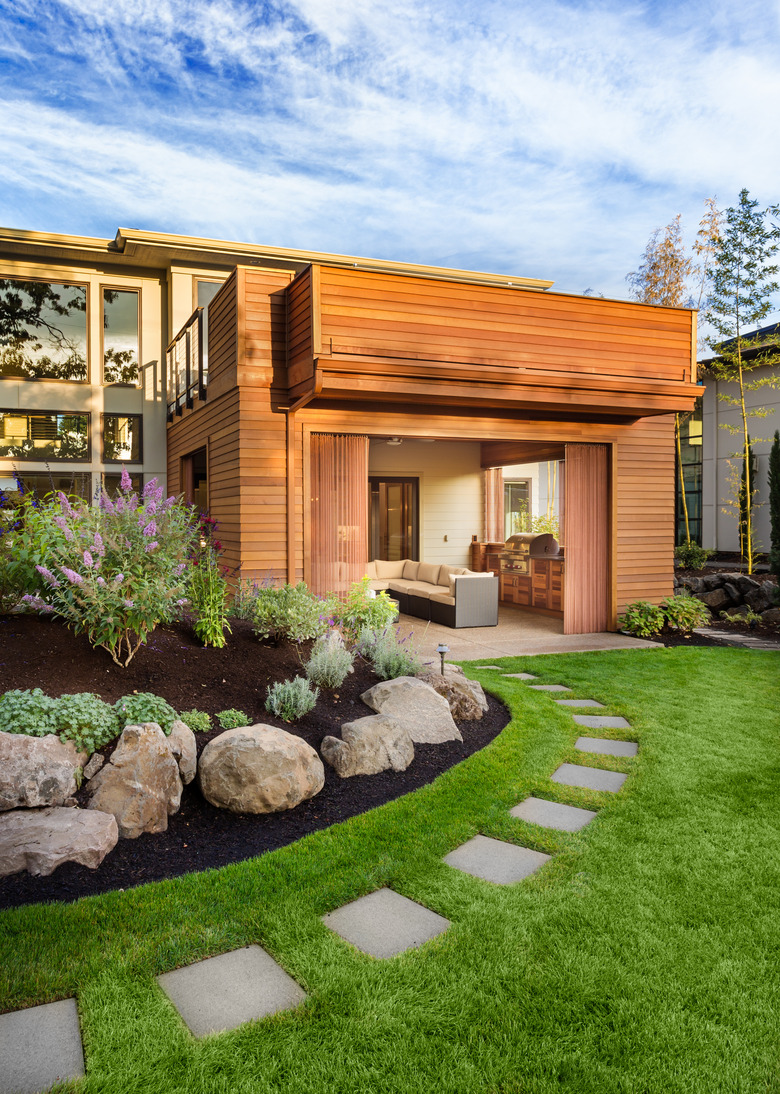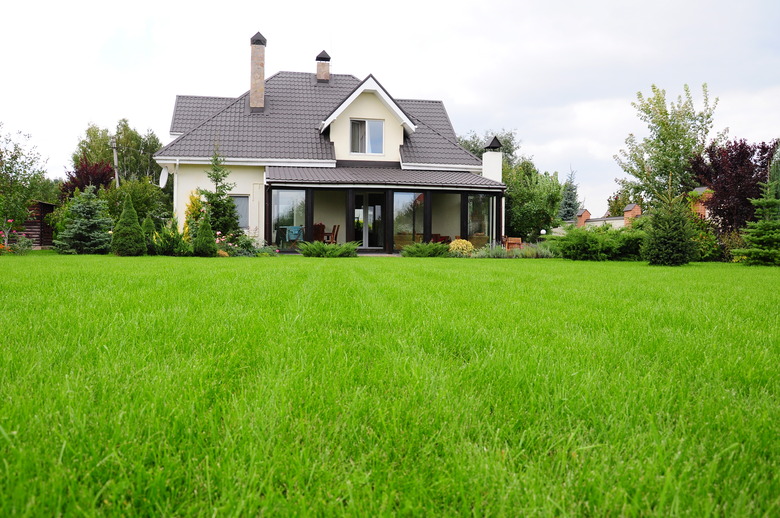A Homeowner's Guide To Organic Lawn Care
These days, many homeowners are considering changing from conventional lawn care to organic lawn care. While natural lawn care can create a safer environment for humans, beneficial insects and wildlife, it's important to understand organic lawn maintenance before you dive in. To succeed, you'll have to invest both time and money in the project.
Using Organic Lawn Care
Many people think that the only difference between organic lawn care and conventional lawn care is the fact that the former doesn't use synthetic fertilizers and pesticides. While that is one big difference, it is by no means the only difference. Employing organic lawn care means using natural products as well as a variety of cultural practices to maintain a healthy, chemical-free home lawn.
A basic principle of organic lawn care is that healthy soil is essential for growing healthy grass. When you improve your soil with organic products, your grass will be less vulnerable to pest and drought damage, and you can cut back on the use of synthetic fertilizer. With organic methods, there are no overnight miracles. Building soil takes time, and this approach produces results over time, not immediately.
Assessing Your Existing Lawn and Soil
The first step you need to take is to assess the quality of your existing lawn. Look at the turfgrass expanse with clear eyes. Are there only a few scattered weeds in the lawn? Is the type of turfgrass one that you like and that works well in your climate?
If the answer to those questions is yes, you can move ahead with confidence to implement a change to organic lawn care. If the answer is no, you probably need to remove the existing lawn and start again. Starting from scratch has advantages, giving you the chance to select better grass that needs less water and nutrition and to amend the soil with organic matter before seeding.
In either case, you'll want to check the quality of your soil. The best soil contains organic matter. The presence of organic matter improves soil drainage and adds water-retention qualities, both of which are useful in encouraging turfgrass root growth. Organic matter assists in fixing nitrogen and holding on to other nutrients in the soil. If you are not sure about the organic content, you can get a soil test that includes organic matter tests.
Building Healthy Soil
The key to building healthy soil for your turfgrass is to increase the organic matter in the soil and to add the nutrients that the plants require. Fortunately, many of the natural products used to fertilize turfgrass also add organic material to the soil. The main nutrients plants need are nitrogen (for growth and green color), phosphorus (for good root development) and potassium (for physiological functions). Complete fertilizers will contain all three of these. Look for the three hyphenated numbers on the package, which will indicate the percentage of nitrogen/phosphorus/potassium (N-P-K) by weight in the product.
If you've been using chemical lawn fertilizers and you look at the packaging, you may learn that they also supply nutrients to the soil as well as the grass. However, there are pronounced differences in the way synthetic and organic fertilizers work. Organic fertilizers don't dump the nutrients all at once but instead make the nutrients available slowly over time. Also, organic fertilizers don't contain ammonium nitrate, a product that reduces the number of earthworms in the soil.
Applying Organic Fertilizer
Of what are organic fertilizers made? Many are derived from animal manure from cows, horses or poultry. Others are plant-based, like seaweed, alfalfa meal, corn gluten and cottonseed meal. You need to read the label carefully since some fertilizers are labeled "natural" or even "organic" while containing synthetic chemical fertilizers. Generally, apply sufficient fertilizer to have 1 pound of nitrogen for every 1,000 square feet. However, some types of turfgrass require more nitrogen than others, so you'll want to factor in the amount of actual nitrogen needed by your turfgrass.
It is best to fertilize your lawn based on the type of turfgrass: late summer/early fall for cool-season turfgrasses and late spring/early summer for warm-season turfgrasses. This gives your turfgrass nutrients at the time it is building its root system. If the roots are strong, you'll see earlier and better top growth the following spring.
Watering Your Organic Lawn
Nobody will be surprised to hear that the proper amount of water is essential to a healthy lawn. Excess water can promote fungal diseases, while inadequate water can push turfgrass into dormancy, a state where the roots stay alive, but the grass itself looks dead.
You have to know your turfgrass and make a decision about accepting or avoiding dormancy. Some grasses are drought tolerant and others are less so. Some will need irrigation to stay green through hot, dry summers. If you are in that situation and you want your grass to stay green, the lawn will need about 1 inch per week in rainfall or supplemental water. Water in the early morning to limit evaporation and avoid fungal diseases that are encouraged by wet foliage at night. Note that watering in summer can increase grub problems. Grub eggs are laid in July and only survive if the soil is moist.
Even if you decide not to work to keep the lawn from going dormant, you'll need to irrigate a bit in prolonged drought conditions. Water every month or so, giving the grass about 1/2 inch of water to keep the roots alive.
Dealing With Thatch
Thatch is a problem in some lawns, especially when conventional care methods have been used. It is common in Kentucky bluegrass lawns when chemical fertilizers have been used. Thatch is a layer of grass roots, rhizomes and stolons just above the soil surface. If it is thicker than 1/2 inch, thatch can prevent water and air from moving into the soil. It also provides a safe haven for insect pests. Adding organic matter slows thatch buildup.
Those interested in organic lawn care use core aeration to manage thatch. Core aeration involves removing soil cores from the lawn to allow water and air to move into the ground and encourage root growth. Aeration methods that simply poke holes in the ground without removing cores are not effective.
Core aeration works best when the soil is somewhat moist, like during spring and fall. You can rent equipment to accomplish this or hire a company to accomplish it. Once the aeration is accomplished, it is a good time to top-dress the lawn.
Top-Dressing the Lawn
Anyone starting a new lawn will want to work plenty of organic material into the soil before seeding. What method can you use to add organic material to an established lawn? It's called top-dressing. Top-dressing means layering organic compost on top of established lawns. While organic compost will supply nutrients, it is mainly used to increase the organic material in the soil and improve soil texture. Top-dressing can also help decompose thatch.
Top-dressing should go hand in hand with core aeration. If you top-dress a lawn with compost without doing coring, it increases the amount of organic matter on the soil surface that becomes thatch. Instead, when the soil is moist and the air is cool, add a 1/4-inch layer of compost and then do core aeration. It's also OK to do aeration and then top-dress. In either case, when both steps are done, you need to drag a mat across the lawn to get the compost into the holes.
Mowing an Organic Lawn
In order to help your organic lawn grasses beat out weeds, you'll want to implement good mowing practices. The general rule is to mow high since longer grass blades provide shade to the soil, keeping it cooler. That in turn prevents weed seeds from sprouting. While optimal mowing heights vary among the different types of turfgrass, one general rule applies to all: the 1/3 rule.
The 1/3 rule says that you should never take out more than 1/3 of a blade of grass in one mowing. That means that you determine in advance how tall you want your grass and then mow before it gets more than 33 percent higher than the ideal height. It is easier than it sounds. If you want grass that is 3 inches high, mow before the grass grows to 4.5 inches. If you want 4-inch-high grass, mow before it grows to 6 inches. This means more mowing when the grass is growing rapidly, like in spring, and less frequent mowing in times of slower growth, like in summer.
You'll see the best results if you mow with sharp blades and mow at 90-degree angles on alternate crossings. This helps the shoots stay upright and prevents torn and ragged tips. Don't rake up the clippings. When left on the lawn, clippings disintegrate quickly, adding a burst of nitrogen as well as organic matter to the soil. Do they contribute to thatch? No, they do not, but you should break up any clumps with a rake.
Weeding an Organic Lawn
The best defense against weeds in an organic lawn is the lawn itself. A vibrant, dense, healthy lawn goes a long way toward weed control. Mowing the grass long, fertilizing it appropriately and giving it adequate water are not just ways to make your grass look good. It also keeps down weeds.
When a lot of weeds appear in a lawn, check on the cultural care of the turfgrass. That is, you are more likely to see weeds if the soil is too wet, too dry or too compacted or if the lawn gets too much or too little nitrogen or too much or too little mowing. Correct these issues and you may get rid of the weeds.
If you are seeing scattered weeds, the best way to deal with them is to pull them out by hand. It's easier to weed when the soil is wet. Use a trowel or weeding fork to help you get out the entire plant, including the roots. If crabgrass is the problem, be sure to mow high and overseed when the lawn begins to thin out. The higher cut and repeated overseeding will keep the desirable grasses dense and may prevent crabgrass seeds from germinating, as they require exposure to light.
Some use corn gluten meal as weed control, and this can be effective during a dry period. It doesn't kill existing weeds, but it stops weed seeds from germinating. However, if you get rain within a week after the gluten is applied, the nitrogen in the corn gluten will actually feed your existing weeds.
Overseeding Your Lawn
Keeping your lawn dense and lush makes your backyard look great and can prevent weeds from growing. In order to maintain that look, however, you may need to occasionally overseed. Overseeding is a technique that replenishes your grass and should only be done when your lawn is showing thin or bare patches. These are usually due to drought, pests or disease.
If you decide to overseed, be sure to match the species of grass currently in the lawn, and don't just scatter seeds here and there. Use a slice seeder, a machine that makes slices in the soil and inserts grass seeds into them. Most slice seeders sow heavily for good germination. Cover the newly seeded area with compost and keep people off it for a few weeks.
References
- Ohio State University Extension: Natural Organic Lawn Care
- NC State Extension: Organic Lawn Care: A Guide to Organic Lawn Maintenance and Pest Management for North Carolina
- University of Connecticut Home & Garden Education Center: Organic Lawn Care
- University of Florida IFAS Gardening Solutions: Organic Lawn Care



